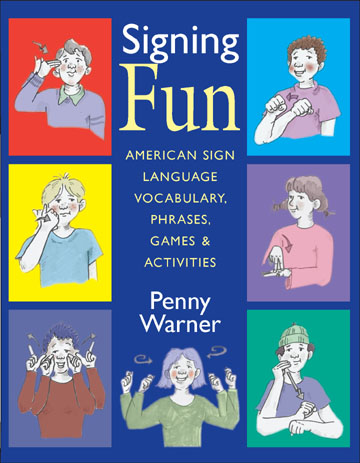Related Products
For Parents
Related Teacher Tools Takeout Items
Early Intervention – What’s That?
Babies are such a nice way to start people.
—Don Herald
The birth of a child is an exciting, life-changing event. A beautiful new baby comes to your house, family, and neighborhood. It is a time for celebration. Family members look at the new child and wonder: Will he be a football star, will she be a famous musician, will he discover the cure for cancer, will she become President of the United States?
But what happens when this new child has a hearing loss? What if, as time goes by, it seems as if the child isn’t learning and progressing as quickly or easily as other children? What do you do?
The information on this page can help you find answers and people who can help–specifically, through the early intervention system that’s available in every state. Early intervention is an effective way to help very young children (birth to the third birthday) catch up or address specific developmental concerns as soon as possible in their lives. Early intervention services are authorized under Part C of the Individuals with Disabilities Education Act. To learn more about these vital services, explore the topics below.
_______________________________
| Overview of Early Intervention Learn the basic steps involved in early intervention, including evaluating the baby or toddler to identify his or her needs and determine eligibility for services. |
| Writing the IFSP for Your Child The IFSP is the written plan that parents and professionals put together to address the needs of a baby or toddler. It must have specific information include. Find out how to write an IFSP, what must be included, and what happens after the plan is written. |
| Key Terms to Know in Early Intervention *New! This page is like visiting a dictionary of important early intervention terms (such as the term “infant or toddler with a disability”). Each definition comes directly from Part C of IDEA. |
Effective Practices in Early Intervention Learn about effective intervention practices in the field of early childhood education. |
| Providing Services in Natural Environments Early intervention services are to be provided in natural environments to the maximum extent appropriate. Find out how the law defines “natural environments,” what’s not considered a natural environment, and where to look for more info on this key requirement. |
| Parent Participation Parents are the child’s first teacher and know their child best. Here you will find a list of resources for parents to help them understand the valuable role they play in early intervention, and another list for EI providers that will help them promote family involvement. |
Transition to Preschool This section will help you answer some essential questions such as… What happens when my child turns three and is no longer eligible for early intervention services? What is transition and how do I find out what options may be available? Come here to learn more! |
This information has been included, with sincere appreciation, from the National Dissemination Center for Children with Disabilities website, which provided informational resources for over 20 years. Regrettably, funding from the Office of Special Education Programs (OSEP) at the U.S. Department of Education ended on September 30, 2013. Our thanks to the many individuals who compiled and created this useful information. Posted to Supporting Success for Children with Hearing Loss January 2014.

